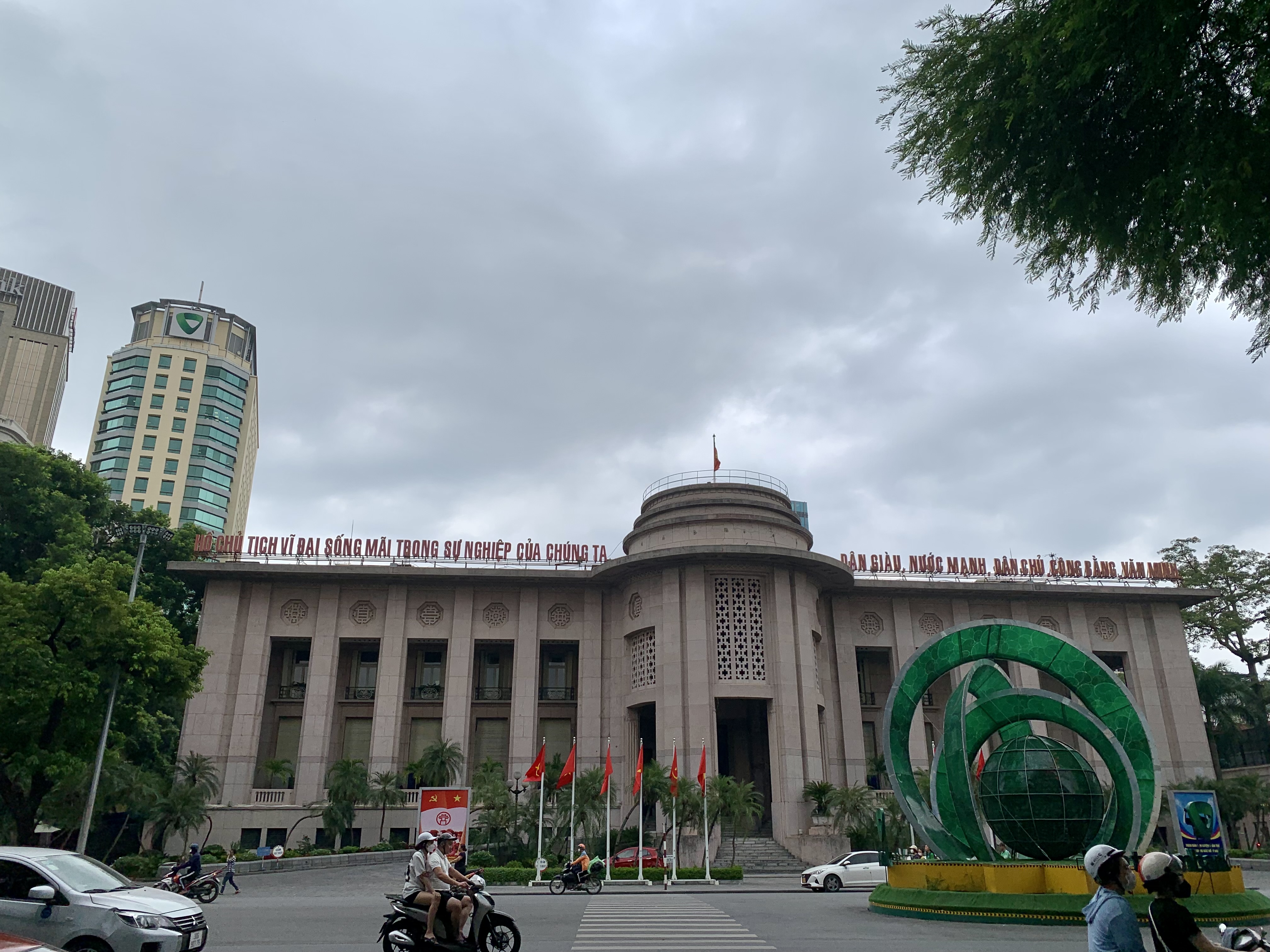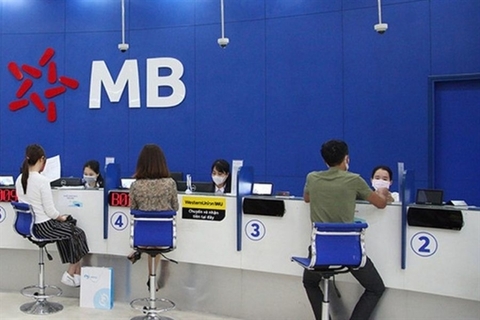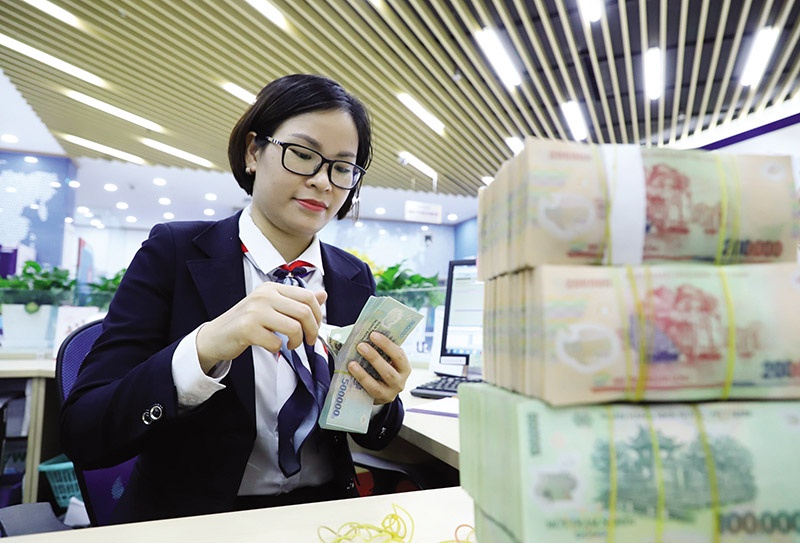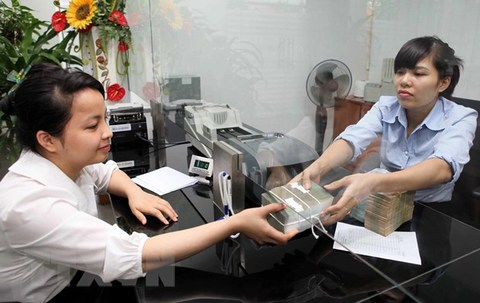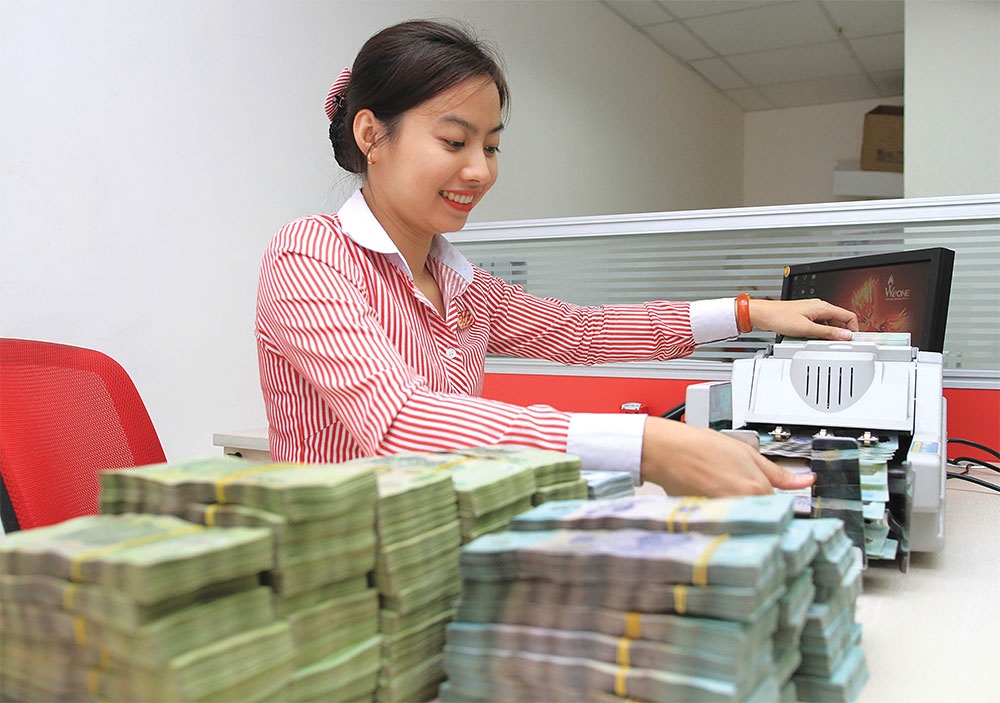Central bank expands credit growth target amid rising capital demand
Central bank expands credit growth target amid rising capital demand
The expansion of the credit room by 1.5-2 percentage points would mean an addition of VND156-200 trillion ($6.5-8.3 billion) being injected into the economy.
The State Bank of Vietnam (SBV) has decided to expand the credit growth target to 15.5-16% from its previous estimate of 14% for this year.

Customers at Vietcombank - Hanoi branch. Photo: Hai Linh |
According to the central bank, lower inflationary pressure and improved liquidity among banks have made it possible to expand the credit room. However, the SBV noted that a higher credit quota would be granted to well-managed and financially sound banks.
SBV Governor Nguyen Thi Hong urged all banks to channel credit to priority economic areas, such as agricultural production, exports, and the operation of small and medium-sized enterprises (SMEs).
“Credit expansion should go hand in hand with risk management to ensure liquidity and safety of the banking system, especially during the upcoming Lunar New Year,” Hong said.
She added the SBV would continue to monitor the situation and support liquidity via different channels if needed, for commercial banks to meet the rising capital demand from the public.
In addition, Hong said the SBV would assess the inflation situation and draft the credit growth target for 2023.
The lack of liquidity in the economy, especially from banks’ credit, has become a growing concern in the past months. Banks reached their credit quota limit due to a sharp rise in credit demand during the first half of the year, leading to difficulties for businesses and people accessing new loans in the remainder of the year.
Given the average expansion rate of the consumer price index (CPI) at 3.02% during the 11 months of 2022, lower than the 4% target set by the National Assembly, experts have suggested the SBV expand credit room for commercial banks.
Data from the SBV revealed total outstanding loans of the economy as of September stood at VND11,600 trillion ($482.3 billion), up 11.05% against late 2022.
Rising capital demand in Hanoi
As of November, credit institutions in Hanoi raised a total of VND4.6 trillion ($191.2 million), representing an increase of 0.2% against the previous month and 8.1% compared to late 2021.
On the contrary, total outstanding loans stood at VND2,915 trillion ($121 billion), up 1.3% month on month and nearly 13% from late 2021, of which short-term loans were estimated at VND1,157 trillion ($48 billion), up 16% from late 2021.
Amid rising capital lending, banks in the city have stepped up risk management by establishing an early warning system to identify high-risk loans timely.
By the end of November, the bad debt ratio at banks reached 1.6% of total outstanding loans.
A report from the SBV-Hanoi branch revealed lending under the banks-business connection program made up 20.5% of total outstanding loans, followed by loans for SMEs (19.2%), agricultural production projects (9.1%), and exports (5.2%).
The report noted the central bank is committed to continuing to provide supporting policies for businesses and people in the forms of debt restructuring, lowering interest rates, and providing new loans with preferential rates.




